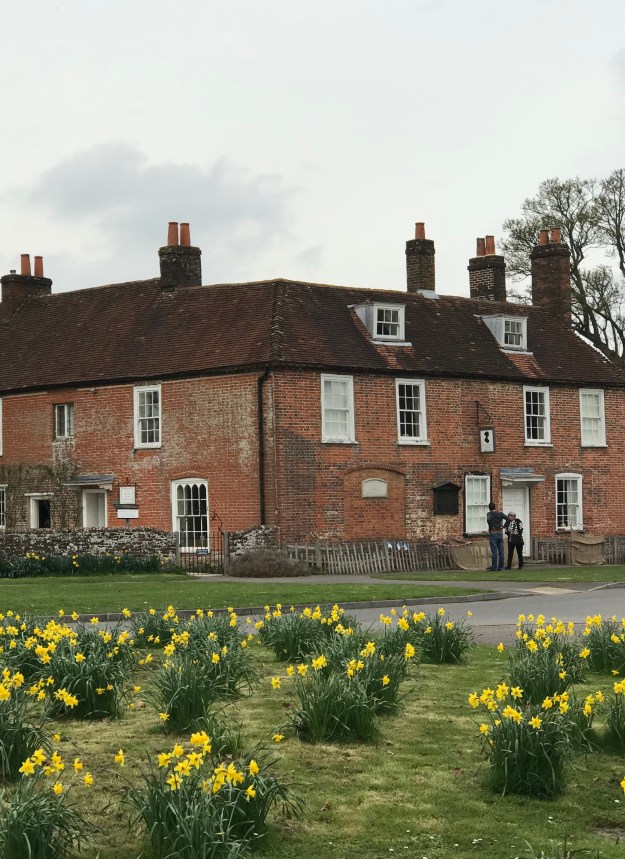
Happy Birthday, Jane Austen! Jane was born on December 16, 1775. She lived the last eight years of her too-short life in the famous cottage on the grounds of Chawton House, where she wrote and polished four of her six surviving novels. Jane’s clergyman father had died, leaving his family dependent on the kindness of relatives. But thanks to a quirk in the family’s fortunes, Jane’s brother was able to provide a home for his impoverished mother and his two spinster sisters, Jane and Cassandra.

The cottage is a pilgrimage site for Jane’s admirers (including me). But until 2015, we could not visit the “great house” where Jane and her family were grateful guests.

From the cottage in Chawton Village, Jane often walked up the country lane, past the village church, on her way to visit her brother.
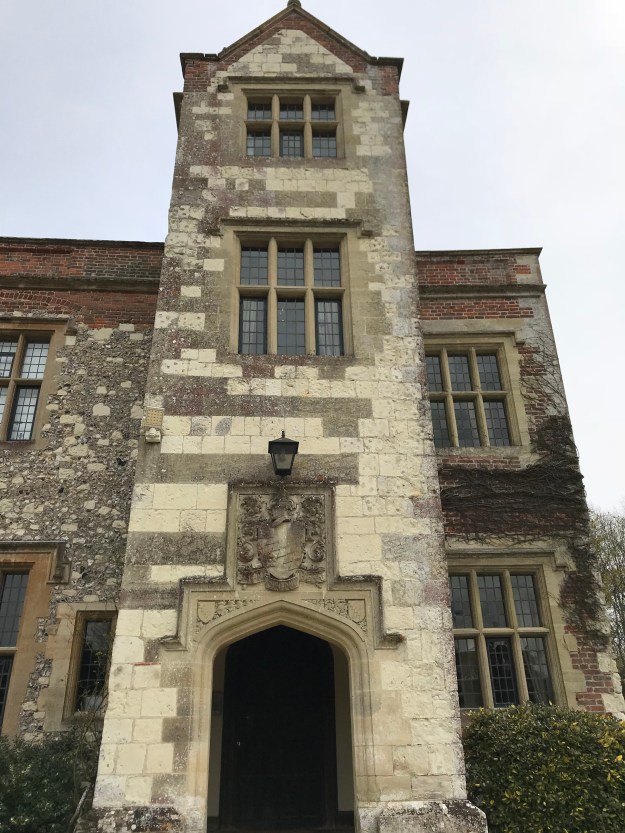
Chawton House must have seemed imposing. How did all this come about?
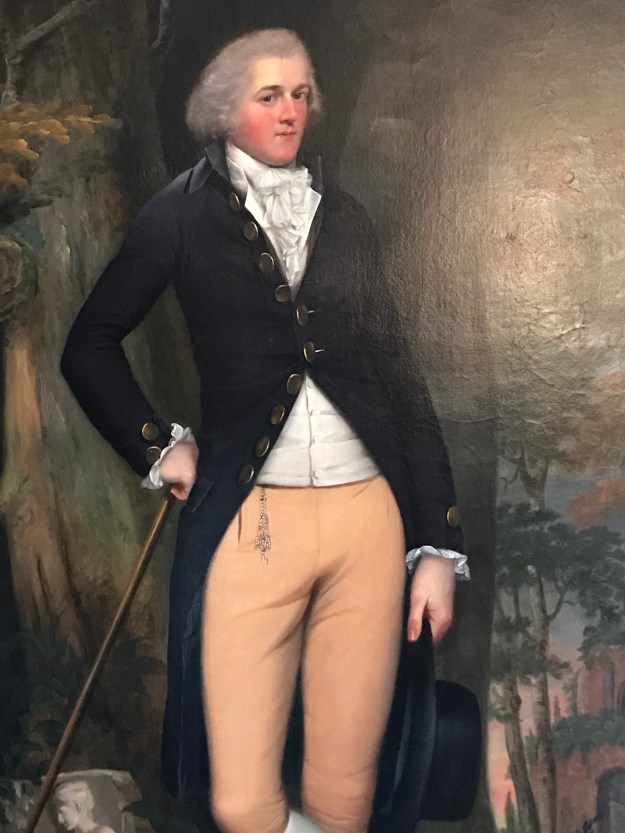
Wonder of wonders, Jane’s brother Edward had won the 18th-century version of the lottery by being adopted out of the Austen family as a child. This was a great stroke of luck, but it made perfect sense to everyone concerned. As Jane would be the first to explain, people with any wealth to speak of really wanted a male heir to inherit their property and keep it in the family name. Edward fit the bill for the Knight family.

Above is Edward’s silk suit, which he wore as a very lucky adopted teenager, around 1782.

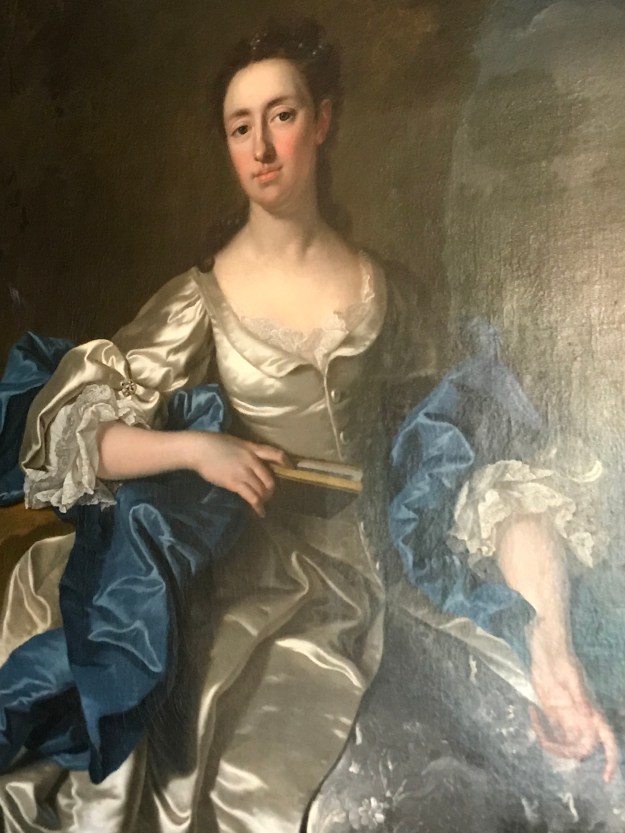
By adoption, Edward acquired the wealthy ancestors above, Jane and Thomas Knight, parents of his adoptive father Thomas. Thomas and his wife had no children of their own. So Edward Austen, son of a cleric of modest means, became Edward Knight and eventually inherited several grand homes and a lot of valuable property.
But nothing lasts forever. Over the years after Edward’s time, the house had various owners and proceeded to fall apart, as neglected houses do.

In 1992 the American businesswoman and philanthropist Sandra Lerner bought the lease and began pouring money into restoration.

In 2003, the house opened as a center for the study of early women’s writing. The house is still a study center and hosts exhibits.
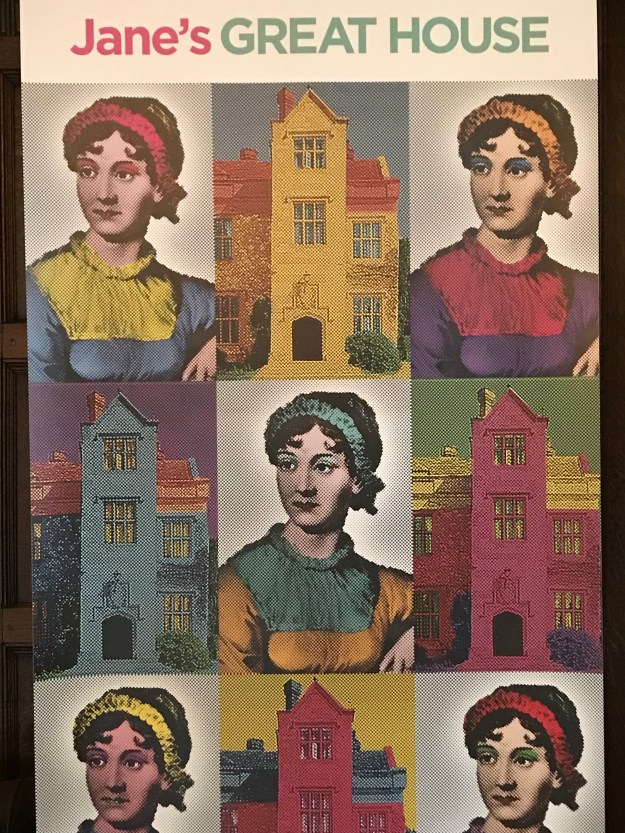
Finally, in 2015, the house opened to tourists like me. (Weddings are also held there, no doubt tempting a lot of Jane-admiring brides).


Today, the house is charmingly old-fashioned, with a bewildering floor plan, creaky old floors, and cozy corners perfect for settling in with a good book.
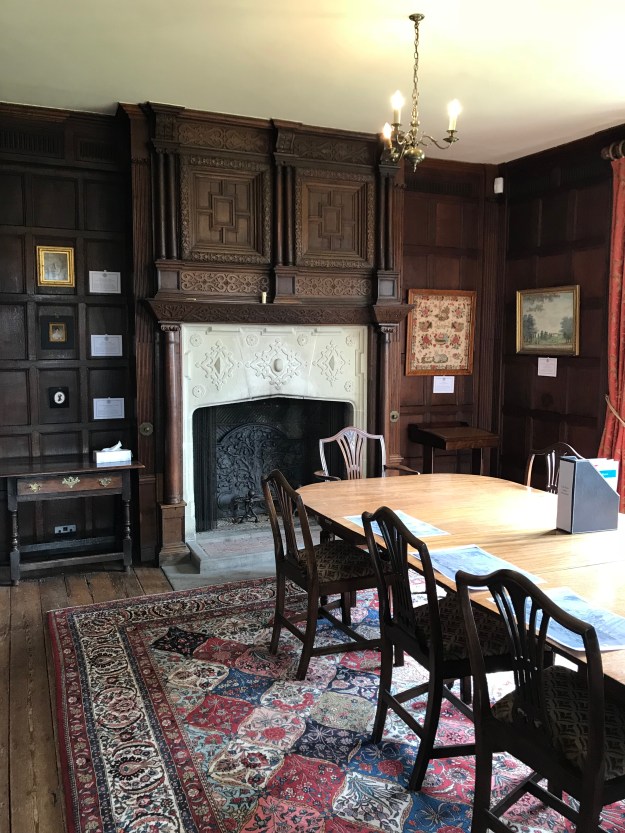
It’s easy to imagine Jane, her mother and sisters at the dining table.
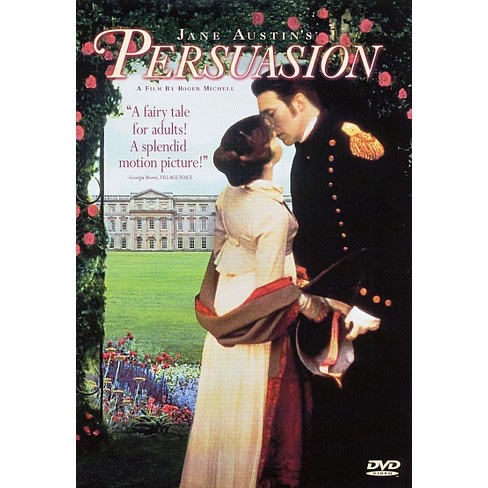
The house reminds me of my very favorite Jane Austen movie, the 1995 version of Persuasion starring Amanda Root and Ciaran Hinds.

The novel is set eight years after Anne Elliot has been persuaded by a well-meaning friend to break her engagement to the love of her life, Captain Frederick Wentworth, because he has no money or connections. Anne also refuses the proposal of a perfectly nice but uninspiring young squire who then marries her sister. Anne is destined to be a sad spinster.
But Captain Wentworth suddenly reappears as a now-rich man looking for a wife. Of course his pride has been hurt, so Anne is out of the question. Until this and this and this happens, and we’re off into the story. Much of the action takes place in a manor house very much like Chawton House, where Anne is often a guest, just as Jane was at Chawton. I think Anne Elliot has a lot in common with her creator, Jane Austen.

As in all of Jane Austen’s novels, there’s sharp satire of the British class system, the precarious financial position of most women, and the unavoidable importance of marrying wisely. There’s unbearable suspense hinging on the timely arrival of a secret love letter. There’s the tremulous joy of a long-awaited kiss. There’s true love at last for the intelligent woman who stubbornly waits for it, willing to be poor rather than suffer through a loveless marriage. It’s a fine, fine movie.

And Chawton House is a fine place to imagine Jane’s life as a spinster with a whole semi-secret life as a writer of genius.


